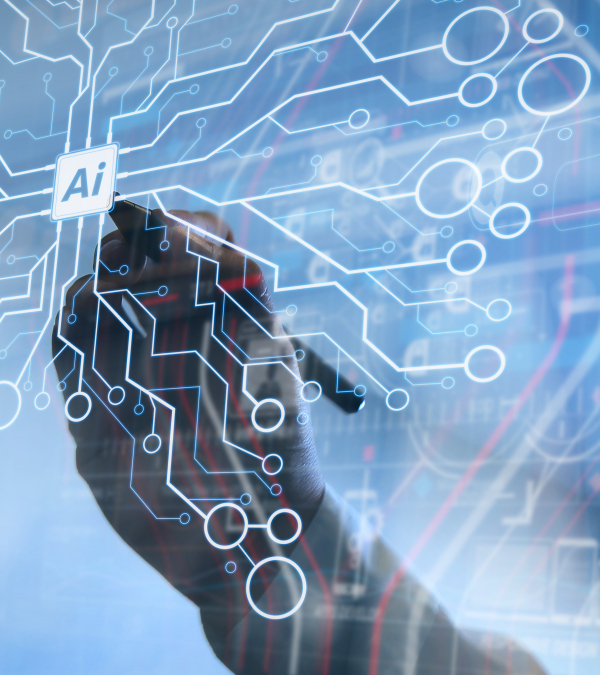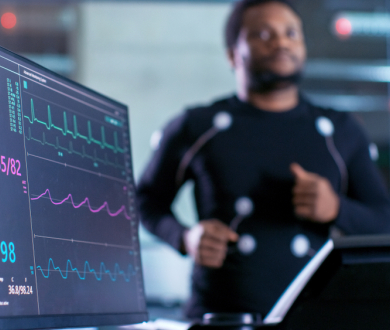
AI in Sport Briefing Note: Medical
In January 2023 Sportsology published a working paper on the trends most likely to affect the sports industry over the following twelve months. The opening paragraph of the report was as follows –
Most of the predictions concerning the future trends within the sports industry in 2023 are highly focused and difficult to prioritize. However, one thing is absolutely clear – the overarching power of the development of the human/machine interface and the metaverse will infuse each and every one of the individual trends. How best should we manage the relationships between humans and machines and how best should we employ the convergence of technologies provided by the metaverse?
Actually, not bad for a prediction. However, less than three months later the release of ChatGPT caused a tsunami of interest in AI that was definitely not predicted, at least for the next few years.
In the coming months Sportsology will release briefing notes as guides to what is happening and what might happen with artificial intelligence in the sports industry. Each note will highlight a particular area – medical, tactical, fans, stadiums etc. – and will aim to be as succinct as possible, but there’s a lot out there.
The first briefing note is attached – it deals with AI in the medical sphere of sport.
Introduction | Medical
Why does it matter? Globally, estimates of the annual economic impact of sports injuries run into hundreds of billions of dollars. More than 100 million sports related injuries are registered with health professionals annually. In US high school and collegiate levels alone, costs of sports injuries are estimated at more than $20 billion because of medical bills and lost playing time.
At the professional level, roughly one-third of player salaries are lost due to injury. In 2020, teams in Europe’s top professional soccer leagues lost an average of $15 million per team due to player injuries. Similar numbers are replicated across sports of all levels, especially contact sports such as American football, basketball and hockey. A significant rise in ACL ruptures in women’s soccer is also causing concern. All of which can be mitigated by the smart usage of AI driven technology.
Tangentially, another advantage of machine learning will be the reduced workload of overloaded medical practioners, not least in the reduction of laborious paperwork. LLMs (large language models) such as Open AI’s GPT-4 can easily complete doctors' paperwork in a fraction of the time that humans need. More importantly than the paperwork is that Artificial Intelligence has been shown to halve the workload of radiologists and more accurately detect more cancers than clinicians alone. Interim findings from the most recent research have shown that AI-supported screening detected 20 percent more cancers compared to the human’s diagnoses..
Why wouldn’t we want a technology that can save money and time and be simultaneously more accurate, efficient and effective?
Prediction, Detection and Diagnosis
Using ML (machine learning) to analyze large data sets is already enabling better prediction as to the likelihood and timing of future injuries. As reinforcement learning continues to learn, such predictions will become even more accurate. For example, ML is delivering significant improvements, through the interpretation of MRI generated imagery in detecting injuries such as ACL tears as well as determining the success of subsequent interventions. Early intervention allows adjustments to training programs, technique modifications and tailored rehabilitation protocols.
Machine learning embedded in wearable technology can analyze vast data sets about an individual's performances and condition and identify any abnormalities or trends that could point to the potential for future injuries. For example, changes in stride patterns or heart rate variability (HRV) may indicate excessive stress or overtraining.
A major advantage of AI-powered systems is the real-time monitoring the system can provide during training or games. The system can be trained to identify potentially catastrophic injuries as a result of collisions or knee jump landings. Such real time feedback allows real time response. Research using data such as distances covered, sprint distance, accelerations and decelerations, has enabled the prediction of 80% of potential injuries. The NFL has been trialing the technology in recent years and reports a 26% year-over-year decrease in injuries in lower extremities during the first two weeks of new seasons.
Another study has assessed the diagnostic accuracy of an AI model for detecting and classifying hip fracture types. The AI model produced an accuracy of 95% which was significantly better than a general practitioner and first-year residents and equivalent to specialist doctors. The conclusion of the research was that AI-based hip fracture detection was comparable to well-trained radiologists and orthopedists and classified hip fractures highly accurately. Machine learning is also showing encouraging results in interpreting MRI scanning imagery to detect injuries such as ACL tears as well as determining the success of any interventions.
AI programs used in soccer are most accurate at predicting risk of ankle and hamstring injuries and reasonably accurate with knee and other lower leg injuries. Development of programs to assist with detection of ACL injuries, especially in women footballers at this time, will prove extremely useful in identifying why such injuries occur so regularly. Such injuries are responsible for more than 60% of all absences through injury. Other sports such as basketball, where knee jump injuries are endemic, will also benefit from AI-driven programs.
Prevention and Rehabilitation
Of course, prevention is always preferable to cure, and AI can enable prevention by continuous analysis of players’ biomechanics. The identification of abnormalities or inefficiencies in an athlete’s movement can enable them to be corrected before they lead to injury. AI algorithms can analyse biomechanical data and identify deviations that lead to injuries by flagging issues such as imbalances, overuse, or faulty movement patterns, allowing the prevention of injuries.
During the rehabilitation phase the patient can be fitted with AI-enabled apps on wearable technology which relay analysis of recovery related data to the medical team in real time. The analysis enables the medical team to construct individually specific rehabilitation plans.
A less discussed element of injury prevention is adherence to appropriately healthy nutritional regimes. AI can analyze an athlete’s dietary habits and recommend personalized regimes ensuring that nutrients necessary to fuel performance are taken on board. Another previously little discussed element of athlete well-being is their mental health, although it is becoming a more transparent issue. AI is able to analyze data from a variety sources - social media, mood assessments (self-reported and confidential) to identify patterns and trends in the athlete’s mental health and act as an alert system that may circumvent a natural reluctance to share sch personal information.
Concussion
AI can also help to make the increasing use of concussion protocols more efficient. Early research into the prevalence of chronic traumatic brain injury among retired professional boxers found that approximately 17% exhibited recognizable characteristics. In the United States, Dr Bennet Omalu, a forensic pathologist, became the first to publish evidence of chronic traumatic encephalopathy (CTE) in retired NFL players. Further evidence has emerged from other studies of CTE in American football and ice hockey players some of which shows that more than 80% of statistically significant control groups were found to be affected by CTE. Nearly all of those 80%+ with CTE symptoms, irrespective of the severity, had cognitive symptoms and mood disorders and signs of dementia. Evidence is also growing of similar results in soccer and rugby players. The type of accurate and speedy monitoring enabled by AI can help elite sports organizations and individual athletes to provide early diagnosis and treatment for any identified neuro-anomalies before the situation becomes irretrievable.
Cardiac
In terms of cardiac issues, although celebrity players such as Christian Eriksson have been in the news recently, coaches appear to be the most vulnerable group. In soccer, for example, Jock Stein died in the dugout, Johan Cruyff, Ronald Koeman, Graeme Souness and Gerrard Houllier suffered serious heart attacks as did others in US sports such as the Chicago Bear’s Mike Ditka, Bill Parcells who required surgery in 1992, Dennis Green of the Minnesota Vikings and Arizona Cardinals, who died during a cardiac arrest in 2016. Tony Sparano of the Miami Dolphins and Oakland Raiders, who died of heart disease in 2018. Bruce Arians then of the Arizona Cardinals, Todd Bowles ex- NY Jets and Mike Zimmer of the Minnesota Vikings also made emergency trips to A&E departments.
The job of head coach is considered one of the most important to the success of major sporting franchises, and one of the highest paid. These are human assets that require constant attention. Their working schedules are incredibly stressful and their personal health regimes generally appalling - poor diet, 80 hours (at least) working weeks, high travel mileage, results driven and normally highly driven personalities.
Finally, such personalities are generally reluctant to proactively subject themselves to regular health checks. AI supported wearable technology can take on that role for them. And, subject to confidentiality regulations, data from wearable tech can be transported to the athletes’/coaches’ employers without any physical intrusion. AI/ML can immediately begin to learn about such key patterns/trends in metrics such as HRV which current research suggests is a key indicator of real and potential health issues in elite athletes. The business models of wearable technology companies such as WHOOP or FitBit are based on using the high-performance needs of elite athletes to sell their products to the mass markets represented by the average person's desire to stay healthy. Perhaps tangentially they are providing a public service.
Robotics
Robotics has enabled orthopedic surgeons to be more precise, less invasive and more-patient specific. For instance, in robotic-assisted joint replacement, the procedure is planned using an AI enabled 3D virtual model of the patient’s own anatomy, producing a hip replacement that feels and functions like a normal hip.
The American Hip Institute (AHI), has published multiple studies on the outcomes of robotic techniques, showing as much as a 94% reduction in inaccuracies, which may decrease the risk of leg length discrepancies, dislocations and other complications.
With the introduction of minimally invasive surgical procedures associated with AI and robotics, athletes are almost guaranteed faster recovery time. As a result, fewer athletes may be permanently sidelined by injuries, thus lengthening their careers. As Andy Murray’s most recent appearances at Wimbledon testify, the procedures work.
The success of robotics will only be increased as the AI systems upon which they are based become more embedded and embraced by the medical fraternity and, perhaps more importantly, by their patients.
A 2021 report in the American Journal of Sports Medicine has concluded that,
AI has revolutionized the technology sector and is poised to transform orthopaedics, particularly sports medicine….The technology should be viewed as a physician aid to augment a physician’s capabilities rather than replace one’s responsibilities.
Digital Twins
A first cousin of the robot is the digital twin (DT). A digital twin is an exact digital copy of an object or, in the case of its use in medicine, an individual. The digital twin provides a digital replication of the individual patient that continuously learns from constantly updated data from which it can, in turn, predict the future of the corresponding human entity. The result is more precise diagnoses and treatments. As such, the artificial intelligence DT can consequently simulate real-time structural performance from real-time sensory data.
For the purposes of orthopedic surgery, AI will create a DT of the specific patient such that the surgical team can plan the surgery in detail, with the aid of machine learning, to arrive at the optimum solution without any invasion of the actual patient. The DT may well be the solution for precision medicine, which relies on the integration and processing of big data. DTs are the digital equivalent of the lab rat; they are not new, but AI is supercharging what they can do and what they will be able to do.
Genetics
Another research opportunity reliant on artificial intelligence which could potentially have significant connotations for the entire sports sector deals with genetic make-up. While the value of motivation, dedication, practice and other key environmental factors are acknowledged as prerequisites for sporting excellence, the significance of genetic make-up has been difficult to isolate, primarily due to data specific scientific inhibitors that the growing power of artificial intelligence will ultimately eliminate.
Conclusion
In terms of efficiency, AI enables the limited amount of monitoring that individual humans are able to conduct to be expanded exponentially. Metrics such as HIIT running, acute and chronic training load figures, distance covered at various speeds, accelerations and decelerations, sleep quality, HRV trends and recent injury history can ALL be fed into a single AI/ML program which can provide de-risking recommendations based on the learning delivered by the program itself. As the program continues to learn in real time, it can transmit that learning to its human partners and provide those partners with detailed and, more importantly, continuous real time information. In that way, knowledge of physical wellbeing and learning does not stagnate. AI will reduce workloads on overstretched human medical practioners by taking on those laborious tasks it is more able to do in nanoseconds.











